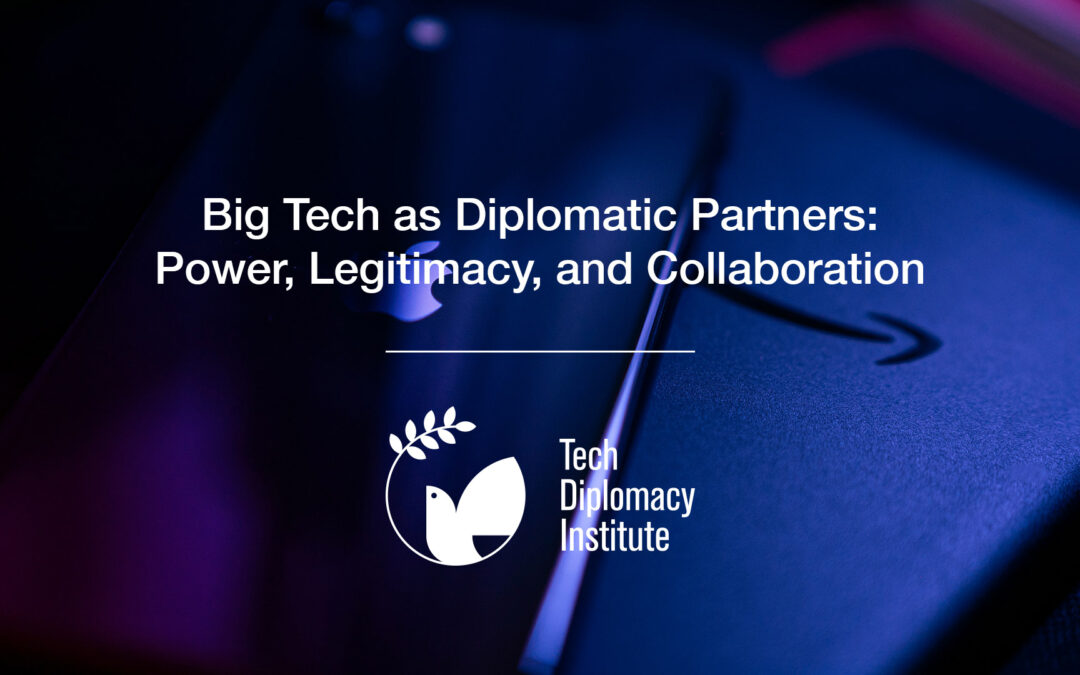The evolving relationship between governments and major technology companies stands among the most critical and complex challenges in contemporary international relations. Leading enterprises such as Google, Meta, Microsoft, Apple, and Amazon have amassed capabilities and influence rivaling those of nation-states, raising urgent questions about power distribution, democratic accountability, and the very future of digital governance. These firms control essential digital infrastructure for billions worldwide, wield capital surpassing many national economies, and effectuate decisions in platform governance and technological development that fundamentally shape economic activity, social organization, and political processes. This profound concentration of power has compelled governments to devise new frameworks that combine robust regulatory oversight with strategic partnerships, recognizing the necessity of both accountability mechanisms and collaborative engagement for effective technology governance in the twenty-first century.
Comparing Tech Company Influence to Nation-State Power
The immense scope of influence held by major technology companies has drawn frequent comparisons to nation-states, with some observers asserting these corporations exercise quasi-sovereign authority over their platforms and digital ecosystems. Market capitalization alone illustrates the enormity of their scale: several technology firms now exceed valuations of $1 trillion, surpassing the GDPs of all but a small number of countries. However, the true significance of their power is found not only in financial metrics but in their exercise of regulatory, social, and functional authority.
Tech companies now undertake functions once reserved for sovereign states: setting behavioral standards through terms of service, adjudicating disputes among users, and administering enforcement through account controls and access restrictions. Their capacity for data collection and surveillance often rivals or exceeds that of governments, and their algorithmic curation shapes the contours of public discourse and information ecosystems on a global scale. Unlike historical trading companies or monopolies, today’s technology platforms enable—and regulate—fundamental human interactions, transcending traditional geographic boundaries and operating at a truly global scale.
However, it is crucial to underscore the fundamental distinctions between technology companies and states. Corporate governance is driven by market forces and shareholder expectations rather than democratic mandates or constitutional oversight. Firms lack the coercive powers and formal legitimacy of state actors, raising complex questions about the intersection of governmental authority and corporate influence—especially with regard to platform governance, content moderation, and standard-setting in the digital domain.
Legitimacy, Accountability, and Democratic Governance
The extraordinary reach of Big Tech prompts foundational debates over legitimacy and accountability in democratic societies. Whereas governments are anchored by electoral legitimacy and constitutional order, technology companies derive authority from their market positioning and user acceptance of policies and terms of service. This dynamic produces what many scholars term a “democratic deficit,” as private firms make decisions affecting billions with comparatively limited transparency, oversight, or public recourse.
To address this legitimacy gap, governments have implemented a range of responses: notable regulatory frameworks such as the EU’s Digital Services Act and Digital Markets Act, data protection laws like GDPR, and ongoing antitrust investigations concerning competitive practices and market power. These initiatives forge explicit legal parameters for platform governance, content moderation, and competitive practices. However, the rapid pace of technological innovation—as well as the borderless nature of digital platforms—can strain the capacity of national regulatory structures to provide effective oversight. Thus, recent years have seen growing interest in alternative multi-stakeholder and self-regulatory models. These approaches integrate governmental checks with industry-driven accountability and broader stakeholder engagement, promoting mechanisms that reflect both public interest and technological realities.
The challenge of ensuring democratic accountability is further complicated by the global footprint of digital platforms. Technology firms routinely make policy decisions that affect users from diverse countries, each governed by different legal systems, political cultures, and societal values. Tensions may arise between universal standards and locally grounded governance models. Tech diplomacy, therefore, acts as a vital avenue for fostering international dialogue, facilitating coordination, and attempting to reconcile disparate regulatory objectives with the imperatives of digital connectivity and societal progress.
Government–Industry Collaboration Models
Despite legitimate concerns about power imbalances and oversight deficits, the path to effective technology governance increasingly requires strategic collaboration between governments and technology companies. No single sector holds all the capabilities necessary to navigate complex digital challenges independently—whether in the realms of cybersecurity, content moderation, innovation, or infrastructure development.
Public-private partnerships exemplify promising collaboration models, combining government authority and resources with private sector expertise and operational agility. Successful initiatives include cybersecurity information-sharing arrangements, digital literacy campaigns, child protection programs, and coordinated efforts to bridge digital divides. These collaborations thrive when established with clearly defined objectives, robust governance frameworks, and accountable structures that center the public interest.
The multi-stakeholder model brings together governments, corporations, civil society, and academia to co-create standards and best practices for digital governance. International forums, coalitions, and thematic governance working groups illustrate the benefits of consensus-building and shared expertise in shaping resilient and inclusive frameworks for emerging technologies.
Co-regulation and regulatory dialogue approaches combine government oversight with industry-driven implementation, allowing platforms to develop tailored solutions within legally defined boundaries and under ongoing public scrutiny. The EU’s regulatory innovations represent leading examples of these hybrid mechanisms, which balance regulatory certainty with operational flexibility.
Yet, each collaboration model faces substantial hurdles—power asymmetries, knowledge gaps, risks of regulatory capture, and resource disparities. A critical path to overcoming these challenges lies in careful governance design, equitable resource allocation, and continually refined accountability frameworks.
Managing Tensions: Regulation and Cooperation
Government–industry relations inherently involve balancing regulatory enforcement with collaborative engagement. Regulators must protect the public interest and guard against abuses, while also recognizing the shared responsibility in solving digital governance challenges. Technology companies, in turn, must align compliance and operational effectiveness with business imperatives and global standards.
Approaches vary by country: the United States has long favored industry self-governance and light-touch regulation but is now moving toward more active oversight. The European Union advances comprehensive regulatory measures paired with dialogue and stakeholder engagement, and China combines stringent government control with incentives for national tech champions. These strategies reflect diverse political structures and policy traditions, necessitating continuous adaptive engagement to find pragmatic, mutually beneficial solutions.
Tech diplomacy provides essential vehicles for positive engagement and collaborative problem-solving, enabling governments and Big Tech to build relationships beyond regulatory disputes and toward shared objectives. As one tech ambassador observed, most countries engage with Big Tech primarily through regulation and penalties, yet building vehicles for constructive partnership is increasingly vital for proactive governance and long-term resilience.
Balancing Power with Public Interest
Striking the right balance between corporate power and the public interest constitutes the defining challenge of digital governance in the twenty-first century. While technology companies offer resources and capabilities essential to modern society, unchecked concentration of influence risks undermining democratic values, competitive markets, and individual rights. Effective governance must enable innovation while embedding rigorous oversight, accountability, and alignment with principles of equity and societal wellbeing.
Adaptive governance approaches are indispensable. Static regulatory systems risk obsolescence as technology advances; pure self-regulation fails to guarantee accountability. Only through dynamic, collaborative frameworks—incorporating democratic principles, flexible oversight, and ongoing stakeholder engagement—can societies ensure that digital transformation reinforces, rather than erodes, public trust and democratic legitimacy.
Conclusion
As government–Big Tech relations become ever more pivotal in shaping global governance, novel approaches to diplomatic engagement are required to ensure technological advancement serves democratic objectives and public interests. Tech diplomacy offers essential mechanisms for navigating this complex terrain—building innovative partnerships, maintaining appropriate oversight, and ensuring that technology remains aligned with core societal values. The capacity to effectively manage government-industry relationships will determine whether innovation enriches democratic governance and social wellbeing, or concentrates new forms of power that threaten these ideals. Continued refinement of tech diplomatic capabilities and governance frameworks will be essential to addressing the fundamental challenges ahead.
References
Brookings Institution. (2022). The geopolitics of AI and the rise of digital sovereignty. Brookings Center for Technology Innovation.
Drezner, D. W. (2019). Technological change and international relations. International Relations Theory, 7(2), 286-301.
Garcia, E. V. (2024). A global south view of tech diplomacy. International Affairs Review, 12(3), 45-68.
Tech Diplomacy Network. (2025). Tech diplomacy: Actors, trends, and controversies. Diplo Foundation Research Report.
Wichowski, A. (2021). The information trade: How big tech conquers countries. Harper Business.

